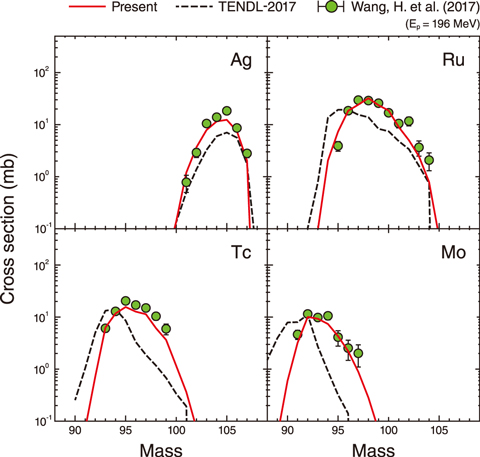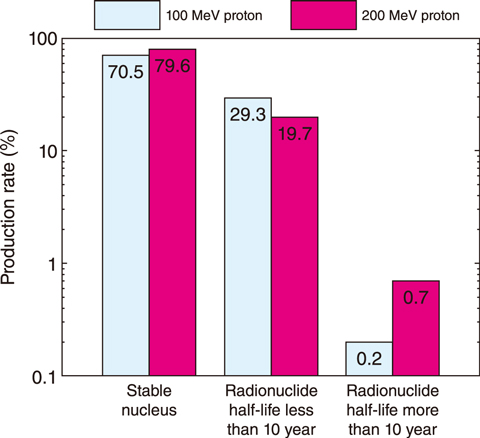
Fig.4-4 Nuclear cross-section of isotopes produced via the p + 107Pd reaction

Fig.4-5 Resulting isotopes from simulated transmutation
Nuclear reactors generate radioactive wastes, a part of which can retain high radioactivity for generations. In Japan, a deep geological repository has been mapped out to avoid passing the management of high-level wastes (HLWs) on to future generations. Another method to reduce the noxiousness of HLWs may be by transmuting the long-lived fission products (LLFPs) in HLW into short-lived or stable isotopes.
One proposed method of inducing transmutation involves irradiating a proton or neutron beam produced by an accelerator or reactor into LLFP. To draw the most efficient blueprint of the transmutation system, numerical simulation is necessary, which requires detailed nuclear data as input such as proton and neutron cross-sections of LLFP. However, due to the difficulty in measuring the cross-sections of LLFP samples experimentally, the available nuclear data is limited. Thus, evaluating the transmutation system with high accuracy has not yet been possible.
To evaluate cross-sections when experimental data is limited, a nuclear model is required. To this end, an evaluation method that can produce nuclear data with higher accuracy than conventional models was developed by adopting (1) resonance capture cross-sectional data of low-energy neutrons based on the nuclear statistical properties, (2) gamma-ray emission probabilities derived from up-to-date nuclear models, and (3) nuclear-level densities computed from a new nuclear model considering nuclear deformation. Finally, we developed a new evaluated data file with the evaluation method.
Fig.4-4 shows nuclear cross-section of isotopes produced via proton and 107Pd. The present evaluation method gives superior capabilities in reproducing experimental data (Wang, H. et al. (2017))* than the existing nuclear data (TENDL-2017). The evaluated data was then applied to simulate transmutation; the irradiation of a proton into 107Pd (half-life: 6.5 million years) is shown as an example in Fig.4-5. Here, the majority of 107Pd was transformed into stable or short-lived isotopes with half-lives of less than 10 years.
The developed evaluated data is expected to contribute nuclear research into employing transmutation as a method for reducing and resource recycling of LLFPs. Similarly, the new evaluation method, developed using up-to-date nuclear models, may also be applicable to non-LLFP nuclides. In future, we plan to provide database important for development of neutron source using accelerator and radiation dose evaluation of medical proton accelerator facility with the evaluation method.
This work was funded by the ImPACT Program of Council for Science, Technology and Innovation (Cabinet Office, Government of Japan), “Reduction and Re-source Recycling of High-level Radioactive Wastes through Nuclear Transmutation”.
(Futoshi Minato)
* Wang, H. et al., Spallation Reaction Study for the Long-Lived Fission Product 107Pd, Progress of Theoretical and Experimental Physics, vol.2017, issue 2, 2017, p.021D01-1–021D01-10.